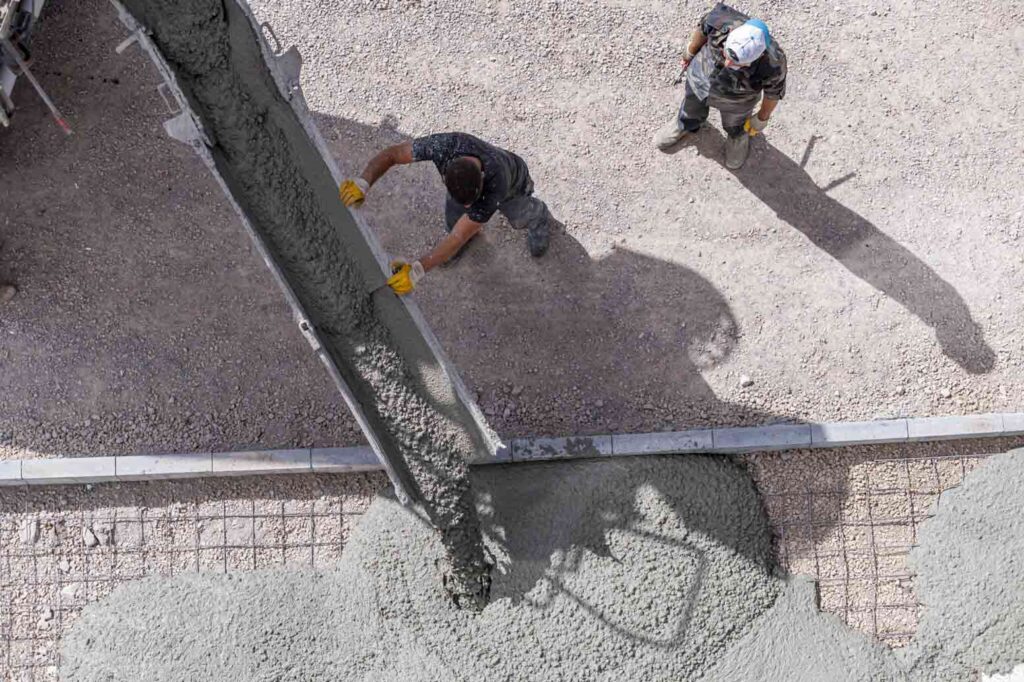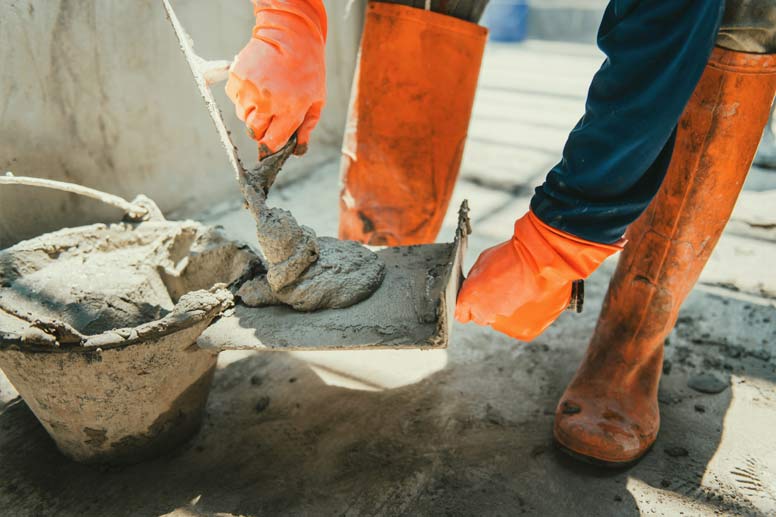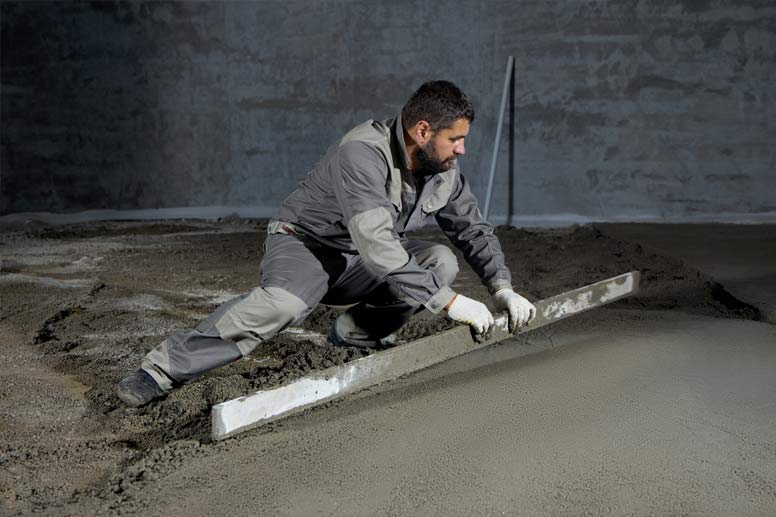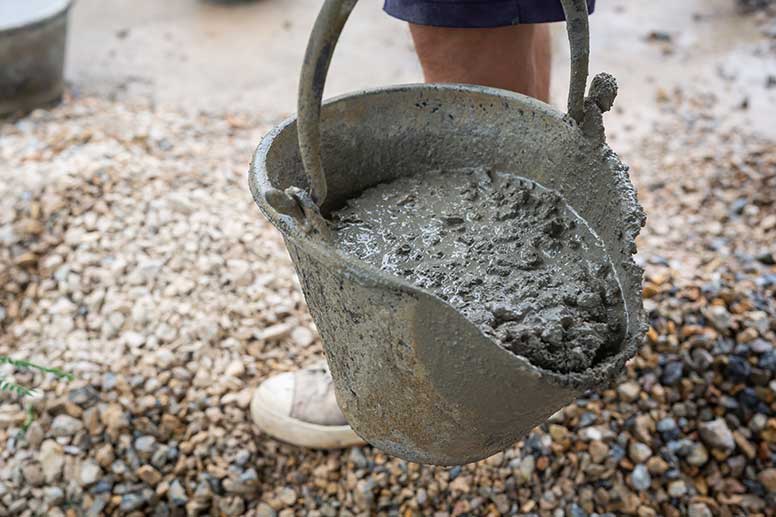How To Price Concrete Jobs in 8 Simple Steps? (2025)

Table of Contents
- 1. Calculate the Concrete Volume
- 2. Account for Surface Prep
- 3. Add Reinforcement and Formwork Costs
- 4. Calculate Labor Costs
- 5. Don’t Forget Overhead Costs
- 6. Factor in Delivery and Miscellaneous Costs
- 7. Add Your Profit Margin
- 8. How To Price Concrete Jobs with Invoice Fly?
- How To Price Concrete Jobs: Other Factors to Consider
- Time to Price, Pour and Perform
- How To Price Concrete Jobs FAQs
How to price concrete jobs goes beyond just knowing the price per yard. Several factors affect the final price, like surface prep, formwork, reinforcement, and finishing work. Plus, you’ve got delivery costs, labor, and overhead to factor in.
Costs can vary depending on the job and location. Knowing how to price each part of the project correctly will help you stay competitive and profitable.
In this concrete pricing guide, we’ll break down the key factors to consider when pricing concrete jobs. By the end, you will be able to give accurate quotes and avoid leaving money on the table.
1. Calculate the Concrete Volume
The first thing you need to do when pricing a job is figure out how much concrete you need. You’ll be pricing by the cubic yard, so measure the length, width, and thickness of the slab or structure you’re pouring.
Here’s the simple formula:
Length (ft) × Width (ft) × Thickness (inches) ÷ 12 ÷ 27 = Volume in cubic yards
For example, if you’re pouring a 10’ x 10’ slab that’s 6 inches thick:
- 10 x 10 x 6 ÷ 12 ÷ 27 = 2.78 cubic yards
Pricing for concrete ranges from $110 to $165 per cubic yard, depending on location and type of mix. For instance, if you’re paying $125 per cubic yard and you need 3 yards, the material cost would be:
- 3 cubic yards x $125 = $375
Pro Tip: Rule of thumb in the industry is to always add about 10% for waste or spillage. This ensures you have enough material and saves you from misguessing and running short on the job.
RELATED ARTICLE: How To Start A Concrete Business? A Step-by-Step Guide

2. Account for Surface Prep
Before you even start pouring concrete, there’s some prep work to consider. It could be clearing the area, levelling the ground, or adding a gravel sub-base. No matter the task, surface prep can be a significant part of the cost.
Things to think about:
- Clearing the Area: If the job site has debris, old concrete, or vegetation, you’ll need to clear it. This could involve tree removal or leveling the ground. Average cost is anywhere from $500 to $1,500 depending on the size of the area.
- Grading: Ensuring the surface is level and compacted is crucial for preventing issues with drainage and cracking. The average cost is between $1,150 to $3,680.
- Sub-base: Gravel, crushed stone, or sand layers are often needed to create a stable base for the concrete. Average cost is about $10 to $20 per cubic yard for materials like crushed stone or gravel.
These costs depend on the site conditions and the type of prep required. The more prep work required, the more you’ll need to charge. Overlooking this step when estimating costs can result in profit loss.
RELATED ARTICLE: Concrete Worker Salary Guide in the U.S. (2025)
3. Add Reinforcement and Formwork Costs
Reinforcement is critical for ensuring your concrete doesn’t crack or buckle. Here’s a general pricing breakdown:
- Rebar: Prices for rebar are typically $0.30 to $0.50 per linear foot. For example, a 50-foot driveway would require approximately $15 to $25 for rebar materials.
- Wire Mesh: If you’re using wire mesh instead of rebar, the cost is usually about $0.15 to $0.30 per square foot. For a 100-square-foot concrete slab, cost would be $15 to $30.
For formwork (the molds used to shape the concrete):
- Basic Formwork: Formwork materials (like wood or metal) range from $2 to $3 per linear foot for sidewalks or driveways. For more complex concrete projects like retaining walls, expect cost ranges closer to $2.50 to $6 per square foot.

4. Calculate Labor Costs
By now you know that labor costs, like most other costs, vary depending on your location and the complexity of the job. The national average cost for concrete labor typically ranges from $8 to $18 per square foot, depending on the scope of work.
For example, if you’re paying $15 per square foot for labor and you’re pouring 100 square feet of concrete:
- 100 square feet x $15 = $1,500 for labor
Make sure to estimate how many hours the job will take and multiply by your workers’ hourly rate to get a more accurate figure. A typical worker can pour about 300 to 350 square feet of concrete per day.
RELATED ARTICLE: How To Get Your Concrete Business Insurance?
5. Don’t Forget Overhead Costs
Overhead includes all the costs to run your business, and you need to account for these when pricing jobs. Here’s what you might need to factor in:
- Equipment: If you’re renting equipment like a concrete mixer, expect to pay around $150 to $500 per day.
- Insurance: Liability insurance is a must. Costing between $500 to $1,500 per year for a small business, depending on the project size and scope. You can calculate your per-job share based on annual premiums.
Pro Tip: Like with spillage, the general rule of thumb is to add 10% to 15% of your total costs to cover overhead.
6. Factor in Delivery and Miscellaneous Costs
Concrete delivery can add significant costs to your job, especially if you’re not ordering a full truckload:
- Delivery Fee: Delivery typically costs between $50 to $150 depending on distance and truck size.
- Short Load Fee: If you’re ordering less than a full truckload (8-10 cubic yards of concrete), expect a short load fee of $40 to $100.
Note: If your site is difficult to access, or if you’re ordering concrete outside normal hours, expect to pay an extra $50 to $100.
7. Add Your Profit Margin
Once you’ve figured all your costs, it’s time to add your profit margin. The standard range for concrete jobs is 10% to 30%. For example, if your total job cost is $3,000, and you want a 20% profit margin:
- $3,000 x 1.20 = $3,600
This ensures you’re making a fair profit and staying competitive.
8. How To Price Concrete Jobs with Invoice Fly?
When you’ve got a lot of moving parts — material costs, labor, prep work, and more — it’s easy for things to slip through the cracks. That’s where solid tools come in.
Invoice Fly can help you stay on top of everything: estimates, invoices, time-tracking and more. Check out our Construction Estimating Software!

How To Price Concrete Jobs: Other Factors to Consider
There are a number of other factors to consider. In addition to basic elements — the amount of concrete, surface prep, and labor — some external factors exist.
Here’s a look at some of the other costs that may impact the final price of a concrete job:
1. Site Accessibility
How easy or difficult it is to access the job site can significantly affect pricing. Special equipment, longer transport times, or more labor may be needed to get the concrete to the right place. Some common issues include:
- Narrow driveways or restricted access: may need smaller vehicles or even wheelbarrows to move the concrete closer. This may add time and labor costs.
- Remote locations: If the job site is far from the concrete supplier, you may face higher delivery fees. Especially if you need a smaller delivery, which often comes with a short-load fee.
2. Weather Conditions
Weather can play a huge role in how much a concrete job costs. For example, if you’re pouring in hot weather, you may need to use retarders to slow down the curing process.
Extra measures such as using heated blankets or additives may be needed in colder weather.
These additional materials can increase costs.
- Cold Weather: Pouring concrete in freezing conditions may require heating equipment or special curing agents. Ensuring the concrete sets properly can add anywhere from $50 to $200 to the job.
- Hot Weather: On the other hand, concrete poured in hot weather may need additives to slow curing and prevent cracking. This can cost $25 to $100 depending on the size and complexity of the job.
3. Concrete Mix Type
The type of concrete mix you use can also change the price. For standard projects like driveways or sidewalks, you’ll likely be using a basic mix. If your project requires stronger or specialized concrete, like high-strength or decorative mixes, you’ll pay a premium.
- Standard Mix: A basic concrete mix typically costs around $110 to $125 per cubic yard.
- High-Strength Mix: Concrete that needs to withstand heavy loads or harsh conditions can cost up to $150 per cubic yard.
- Decorative Concrete: If you’re using stamped, colored, or polished concrete, the price could go up by $5 to $15 per square foot.
4. Job Complexity
The more complicated the job, the more it will cost. Simple slab pours will be cheaper than jobs that require detailed work or unique shapes.
Keep in mind:
- Decorative Finishes: Adding patterns, colors, or textures to the concrete can add to both labor and material costs. Stamped concrete, for instance, can cost an additional $8 to $20 per square foot.
- Slope or Reinforced Slabs: Certain foundations or slabs need to support heavy machinery. This means additional reinforcements or a specific slope might be necessary.
5. Project Location
Where the project is located can have a major impact on pricing. Concrete prices vary from state to state and even city to city. Local supply, demand, and transportation costs all make a difference.
You may find:
- Urban Areas: Jobs in busy cities or high-demand areas might be more expensive. Increased transportation costs, higher labor rates, and more competition should be considered.
- Rural Areas: In less populated areas, you might get a better price for labor and materials. However, delivery charges could be higher if concrete trucks have to travel long distances.
6. Permits and Regulations
Depending on the size of the project and the location, you might need permits for concrete installation. This can add additional costs and time to the job.
For example, some districts require a permit for pouring concrete foundations, driveways, or sidewalks. Permit fees/installation costs typically range from $50 to $500, depending on the type of project and the location.

Time to Price, Pour and Perform
You’ve got the right estimate, you’ve factored in all the costs, and you’ve set your profit margin. Now you know how to price concrete jobs with confidence, knowing you’ve done it right.
Stick to your process, keep putting in the effort, and you’ll see your concrete business grow into a profitable and well-run business.
Use Invoice Fly to stay on top of your estimates, invoices and online payments. A free blank invoice template is a great place to start improving how you do business.
How To Price Concrete Jobs FAQs
The price depends on many factors, like the size of the job, location, and complexity. The national average for concrete is between $110 and $165 per cubic yard, but be sure to factor in labor, site prep, and overhead.
Measure the area to be poured (length × width × thickness), convert thickness to feet, and divide by 27 to get cubic yards. Add 10% for waste.
Invoice Fly helps accurately estimate concrete jobs. It factors in all the materials, labor, and costs and keeps everything organized in one place.
To calculate how much concrete is needed for a 10x10 slab, use the formula: Length × Width × Thickness ÷ 12 ÷ 27. For example, a 10' x 10' slab that’s 6 inches thick would require 2.78 cubic yards of concrete. Always add 10% for waste, so you’d need about 3 cubic yards.
The cost of concrete can be affected by a number of factors. This includes material quality (standard mix vs. high-strength mix), job site accessibility, weather conditions, labor rates. Additional features such as reinforcement or decorative finishes should also be considered. Delivery distance and short-load fees can also add to the cost.
Pouring concrete in the winter can actually be more expensive. Cold temperatures require additional steps, such as heating the concrete or using additives to ensure it sets properly. This can increase labor and material costs. However, winter pricing can sometimes be lower for labor since there are fewer jobs being booked during the off-season.
